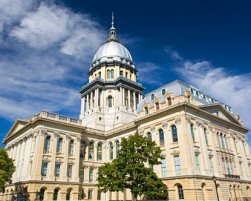Yesterday, the State Board of Education released its model of how school districts fare in the first year of the school funding structure in the Governor’s veto of Senate Bill 1. (Recall that Senate Bill 1 is the funding reform bill that fixes our broken school funding system for the first time in two decades, which passed both chambers of the legislature only to be vetoed by the Governor.)
We call on legislators to override the veto. These numbers tell a few interesting stories that show a long term plan to decrease state education funding and push costs of educating kids further onto property tax payers. This overreliance on property taxes is one of the main reasons Illinois has earned the distinction of having the most unfair funding system in the country. Why would we double down on that failed structure?
Here are some initial thoughts:
- The definition of adequate funding decreases by over $1 billion. That means even if the evidence-based model were fully funded, schools would still have $1 billion less than they need.
- The expected local investment increases by over $700 million. That means local property taxpayers would be expected to pick up more of the cost of education than under the version of SB1 the legislature passed.
- Here’s the bigger deal: going forward, the veto ignores inflation and actual cost of living differences. Adequacy is a moving target. If we reach 2017 adequacy levels in 20 years, we can’t pretend that’s the current cost of educating our students.
- Districts will soon begin picking up pension costs for their newly-hired teachers. When SB1 passed the legislature, it included those increased costs in the calculation of adequacy. But that was stripped out in the veto so that districts would still have to pay pension costs, but the model would pretend they had that funding available to invest in the classrooms.
- In 2020, the model will shift to a per-pupil hold harmless. That means districts that have lost student enrollment, even if they are still not adequately funded, will lose money from their hold harmless.





